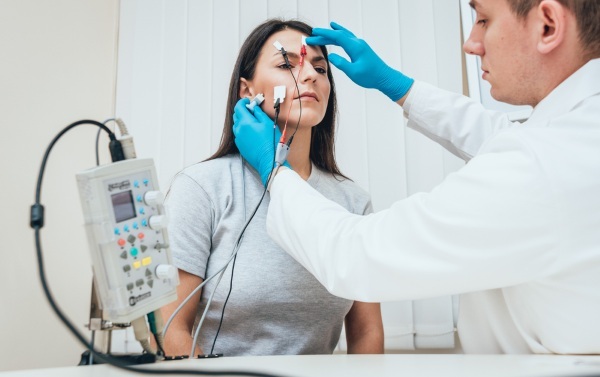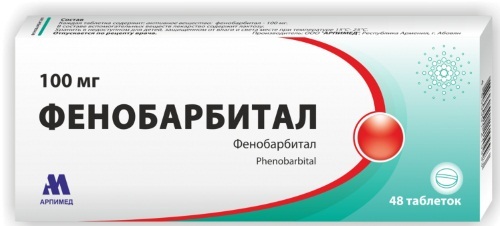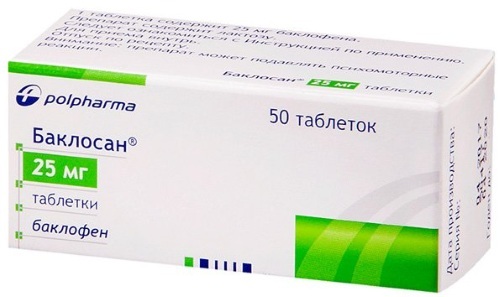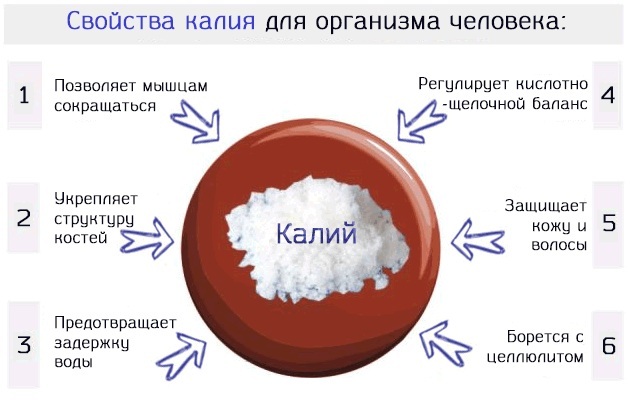Involuntary muscle contraction (myoclonus) is characterized by a sudden contraction of one or a group of muscle fibers. They occur in a person regardless of age, at rest or during movement.
This may be normal, but more often it is a consequence of a dysfunction of the nervous system. A physician or neurologist will help determine the reason. The specialist will prescribe a medical examination, taking into account the results of the diagnosis, and select the most effective treatment.
Record content:
- 1 Description
- 2 Symptoms
- 3 Reasons for the appearance
- 4 Diagnostics
- 5 When to see a doctor
- 6 Prevention
-
7 Treatment methods
- 7.1 Medications
- 7.2 Traditional methods
- 7.3 Other methods
- 8 Possible complications
- 9 Video about myoclonus
Description
Given the cause of involuntary muscle contraction, doctors distinguish between the following types of pathological conditions:
| Name | Description |
| Physiological myoclonus | Appear in healthy people, do not require specific treatment:
|
| Essential | In most cases, the underlying cause is heredity. Convulsions occur on their own, without accompanying symptoms. |
| Epileptic | Involuntary contractions occur against the background of an epileptic disorder. |
| Symptomatic (secondary) | The pathological condition develops due to the underlying disease:
|
Diagnostics will help to determine the underlying cause or disease, after which the doctor will select the most effective treatment.
Symptoms
Involuntary muscle contraction (the neurologist or therapist will help determine the causes by prescribing diagnostic tests for the patient) accompanied by characteristic clinical signs:
- undulating stiffness of muscle tissue;

- aching or pressing painful sensations;
- spreading discomfort to other muscles;
- partial or complete loss of control over the affected limb;
- a twisting sensation appears;
- severe muscle tightness, which is accompanied by acute pain syndrome when trying to unclench an arm or leg;
- muscle spasms thicken the fibers, which can be seen with the naked eye;
- pain occurs when probing the affected area;
- heart rate increases.
In some situations, involuntary muscle contraction affects the condition of the pupils.
Rarely, progressive pathological processes provoke the following symptoms:
- Loss of consciousness, after which, in most cases, epileptic seizures occur.
- Blurred consciousness, audible hallucinations. A symptom that also indicates the onset of an epileptic seizure.
With any signs that appear, it is recommended to see a doctor in order to undergo a full medical examination and start timely treatment. Otherwise, the likelihood of serious complications is high.
Reasons for the appearance
There are certain provoking factors against which pathological processes develop, resulting in involuntary muscle contraction:
| Name | Description |
| Deficiency of nutrients and trace elements | Muscles need protein and water. Otherwise, they weaken, against the background of which spasms appear. |
| Increased emotionality | As a result of severe stress and nervous tension, a person cannot sleep normally. The work of the nervous system is disrupted, as a result of which involuntary muscle contractions of various parts of the body appear.
|
| Great physical activity | Muscles become overstrained, numb, and twitch after intense training or hard work. |
| Temperature difference | Exposure to cold and hot air causes a sharp narrowing of the blood vessels, against the background of which muscle spasm occurs. Systemic phenomena cannot be ignored, it is important to consult a doctor in a timely manner. |
| Prolonged standing on your feet | People are more likely to have cramps at night after a hard day at work. |
| Dehydration of the body | Excessive sweating or loss of fluid leads to involuntary muscle contractions. |
| Uncomfortable posture | Spasms are observed if you lie on one side for a long time with a slightly bent leg. |
| The use of certain drugs | Medicines should be used strictly according to the doctor's prescription (antibiotics, diuretics, statins) or carefully read the instructions for use. The drugs provoke side effects, including seizures. |
Involuntary muscle contraction (the causes and degree of pathological lesions will help determine the diagnosis) occurs in people who worked hard during the day, were on their feet for a long time. The same goes for old people with lower limb diseases. In some cases, seizures occur in children when the body temperature rises.
Diagnostics
The doctor will help to establish an accurate diagnosis, determine the provoking factor and prescribe therapy. It is important to go to the hospital when the first signs appear, undergo a full medical examination and start treatment.
For diagnosis, patients are assigned the following measures:
| Name | Description |
| Electro-neurography | Short electrical impulses act on the peripheral nerves, irritating them. The induced tension will allow assessing the speed of nerve conduction. |
| Electromyography | The study helps measure the electrical activity of the muscles.
|
| Electroencephalography | A diagnostic method by which the electrical activity of the brain is assessed. |
| Magnetic resonance imaging (MRI) | The study will determine the damage to the brain, the development of malignant processes. |
To identify general abnormalities or diseases in the human body, he is prescribed a blood test, urine test, an X-ray of the head, and a computed tomography (CT) scan. Blood vessels are also examined and allergic tests are performed.
When to see a doctor
It is necessary to visit a therapist if muscle cramps recur frequently. Consultation and diagnostics will help eliminate dangerous causes that will provoke serious complications. A doctor's help will also be needed when severe painful spasms appear.
An involuntary muscle contraction (the reasons may be the result of a heavy load on the body or a serious illness) is diagnosed and treated by a physician. Taking into account the patient's condition and the degree of muscle tissue damage, also a provoking source may require consultation of other specialized specialists (neurologist, psychiatrist, narcologist, ophthalmologist).
Neurological or metabolic changes require careful medical evaluation. Based on the results, the doctor selects an effective treatment to restore material and fat metabolism.
Prevention
You can prevent involuntary muscle contraction if you follow the recommendations of the therapist, even after full treatment. The risk of recurrence always remains.
For prevention, the following rules should be remembered:
- Eat a balanced diet in order to constantly maintain the required level of trace elements and vitamins in the body.
- Eliminate bad habits from life, including the abuse of alcoholic beverages, cigarettes and drugs.

- Wear comfortable shoes and loose clothing to prevent muscle squeezing.
- Strictly adhere to the regime of work and rest.
- Avoid stress at work and at home, control your emotions.
- At the first symptoms or suspicions, consult a doctor in order to be treated promptly.
- Take a contrast shower. Water treatments for the legs will help prevent night cramps. A contrast shower has a positive effect on blood circulation.
A prophylactic visit to the hospital will also help prevent muscle cramps. It is recommended to monitor your weight and get rid of extra pounds, which put a heavy load on the lower limbs and muscles.
Treatment methods
Involuntary muscle contraction (it is important to establish the reasons at an early stage in the development of pathological processes in order to prevent complications) is treated with complex methods. You should not engage in therapy on your own, as you can provoke negative consequences.
Traditional medicines can help eliminate muscle cramps. If there are no serious contraindications, there is no individual sensitivity, you can use traditional medicine.
Medications
Medicines are prescribed by a general practitioner after a complete medical examination based on the results obtained. You cannot take medications on your own, as they entail the appearance of side effects. Medicines are selected by a specialist, taking into account the patient's condition, the degree of development of pathological processes and the individual characteristics of the body.
| Drug group | Name | Application |
| Anticonvulsants | Carbamazepine, Phenobarbital | The medicine is taken orally with plenty of water. The recommended dosage for an adult is 100-200 mg 1-2 times a day. |
| Pain relievers | Ketanov, Ketorolac | Adults are prescribed 10 mg every 4-6 hours. With severe pain syndrome, the dosage is 20 mg 3-4 times a day. |
| Antispasmodics | Spazmalgon, Papaverine | Adults are recommended to take the drug after meals, 1-2 tablets 2-3 times a day. The duration of therapy lasts 5 days. |
| Muscle relaxants | Mydocalm, Baclofen | The adult dosage is 50-150 mg 2-3 times a day. |
| Non-steroidal anti-inflammatory drugs | Ibuprofen, Diclofenac | Adults are prescribed 1 capsule 3-4 times a day with an interval of 6-8 hours. |

Additionally, the patient is prescribed a special complex of multivitamins to replenish the level of potassium and magnesium (Asparkam, Complivit).
Traditional methods
Recipes of healers and healers can also be used for involuntary muscle contraction, but strictly after consulting a physician therapist. Many herbs and natural ingredients used can trigger allergic reactions or worsen health conditions.
| Name | Recipe | Application |
| Poppy flowers | Grind the main component to a powder state. Pour 1 tbsp. flowers with milk (20 tablespoons) and add a small amount of natural honey. | The finished product is recommended to be consumed 3 times a day, 1 tbsp. |
| Healing ointment | Mix egg yolk with 1 tbsp. turpentine and 1 tbsp. apple cider vinegar. | The resulting product is used for external use, rubbing the affected muscles. |
| Birch buds | Dried kidneys (2 tablespoons), pour boiling water (200 ml). Leave for 1 hour and strain. | The finished product is taken in 3 tbsp. everyday. |
Lemon juice helps to eliminate involuntary muscle contraction. It is rubbed into the affected area of the body, left to dry and wrapped in a warm cloth. The procedure is recommended before bedtime.
Other methods
The fight against involuntary muscle contractions involves not only taking medication, but also attending physiotherapy procedures:

| Name | Description |
| Magnetic therapy | The treatment reduces spasm and improves the trophism of the affected muscles, prevents blood stagnation and spasticity. |
| Electrophoresis | The medicine allows you to relax the muscles and relieve tissue spasm. |
| Acupuncture | A point effect improves blood circulation. The conduction of nerve impulses is restored. |
| Hirudotherapy | Leeches improve blood circulation and reduce ischemia of the affected tissues. |
Massage procedures have a positive effect on muscles, improving trophism, relaxing them, reducing swelling and pain.
Involuntary muscle contraction must be treated comprehensively, observing a certain dietary intake. One of the reasons for the appearance of seizures is a lack of vitamins and minerals.
Special dietary food will make up for the lack of the following substances:
| Name | Description |
| Phosphorus | Supports the functioning of the central nervous system, which takes part in the functioning of muscle tissues. Phosphorus is found in large quantities in marine fish and dairy products. |
| Potassium | The trace element is responsible for the operation of the cell pump, which removes excess fluid from the human body. To replenish potassium stores, it is recommended to consume more fresh vegetables and fruits.
|
| Magnesium | Expands blood vessels and relieves spasms guaranteed. Coffee and alcoholic drinks, as well as diuretics, flush the element out of the human body. The level of calcium increases, against the background of which involuntary muscle cramps appear. For magnesium replenishment, it is recommended to consume more whole grains, sesame seeds and natural cocoa. |
| Vitamin D | The element supports the functioning of the organs of the digestive system. Promotes the absorption of potassium, phosphorus and magnesium in the intestines. Vitamin also helps to restore calcium levels in blood vessels. Found in yeast, algae and oily fish. |
It is important not only to formulate your diet correctly, but also to adhere to a healthy lifestyle. Give up any bad habits (cigarettes, alcohol, drugs). Use herbal drinks instead of tea. Engage in moderate physical activity and stretch your muscles.
In the absence of a positive effect after drug treatment or if the brain or spinal cord is damaged by a tumor, patients are indicated for surgery.
Possible complications
In the absence of timely therapy, progressive pathological processes entail serious consequences:
- pinched nerve;
- muscle tension increases;
- blood circulation is disturbed if an involuntary muscle contraction caused vegetative dystonia;
- severe cramps or partial loss of sensitivity on the background of vigorous physical exertion.
In some situations, the integrity and functioning of muscle tissue is impaired, cardiac arrhythmia occurs. Unbearable pain leads to a fall of a person and getting various injuries.
Involuntary muscle contractions occur in a person at any age. The severity and frequency of seizures depends on the provoking factor, the underlying cause.
The first manifestations cannot be ignored, since they may indicate the development of a serious illness. It is important to undergo an examination in a timely manner, establish an accurate diagnosis and begin treatment. Otherwise, the likelihood of serious consequences is high.
Article design: Vladimir the Great
Video about myoclonus
What is myoclonus:



